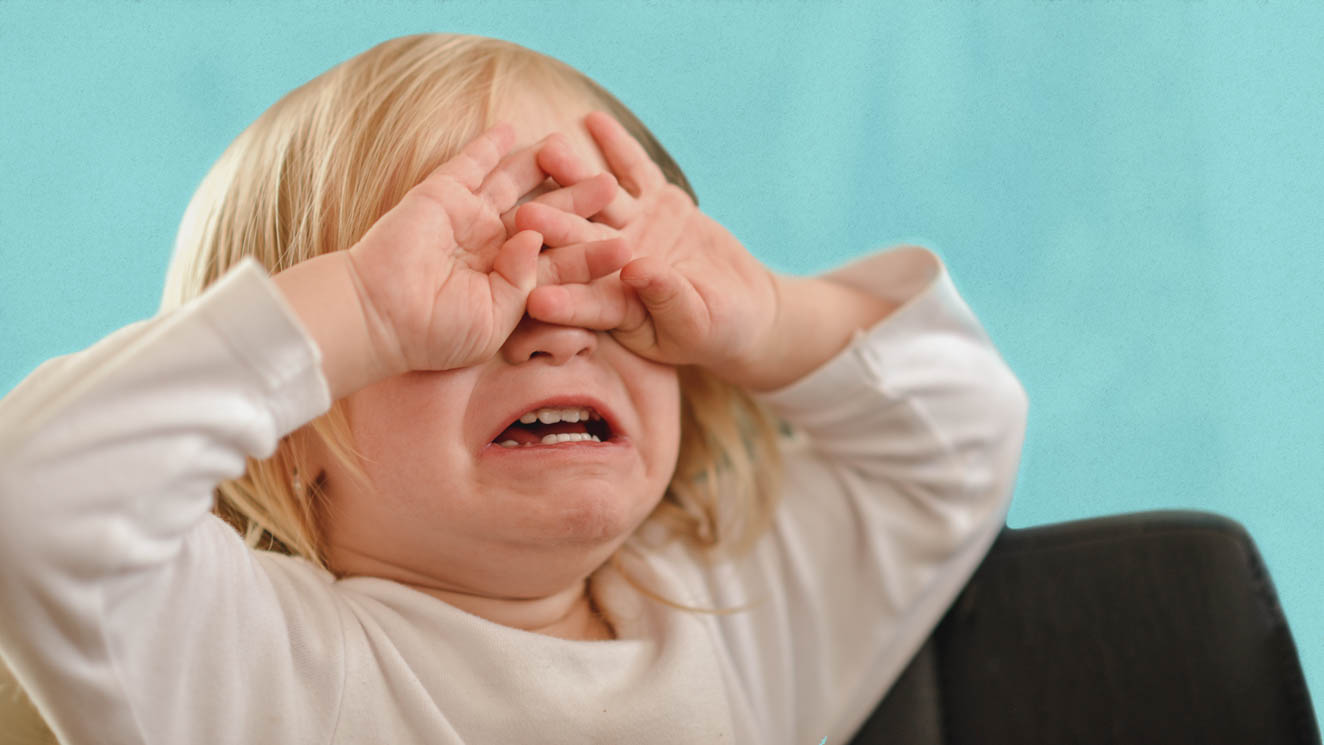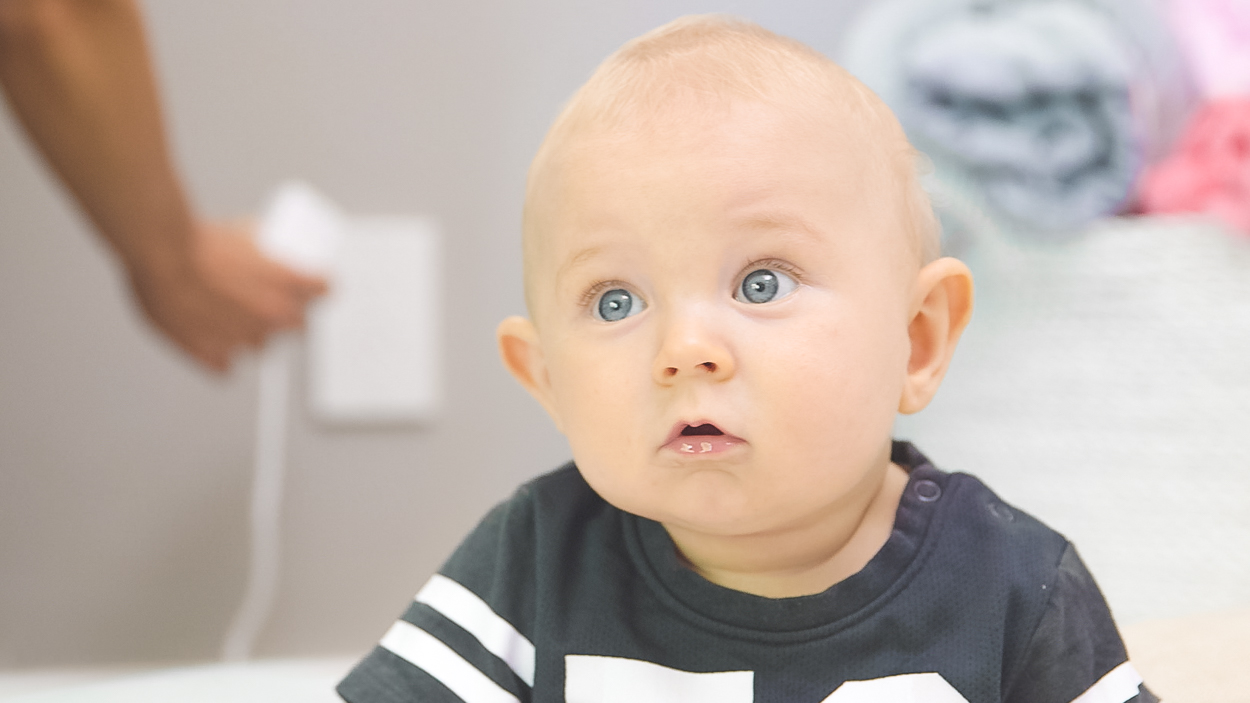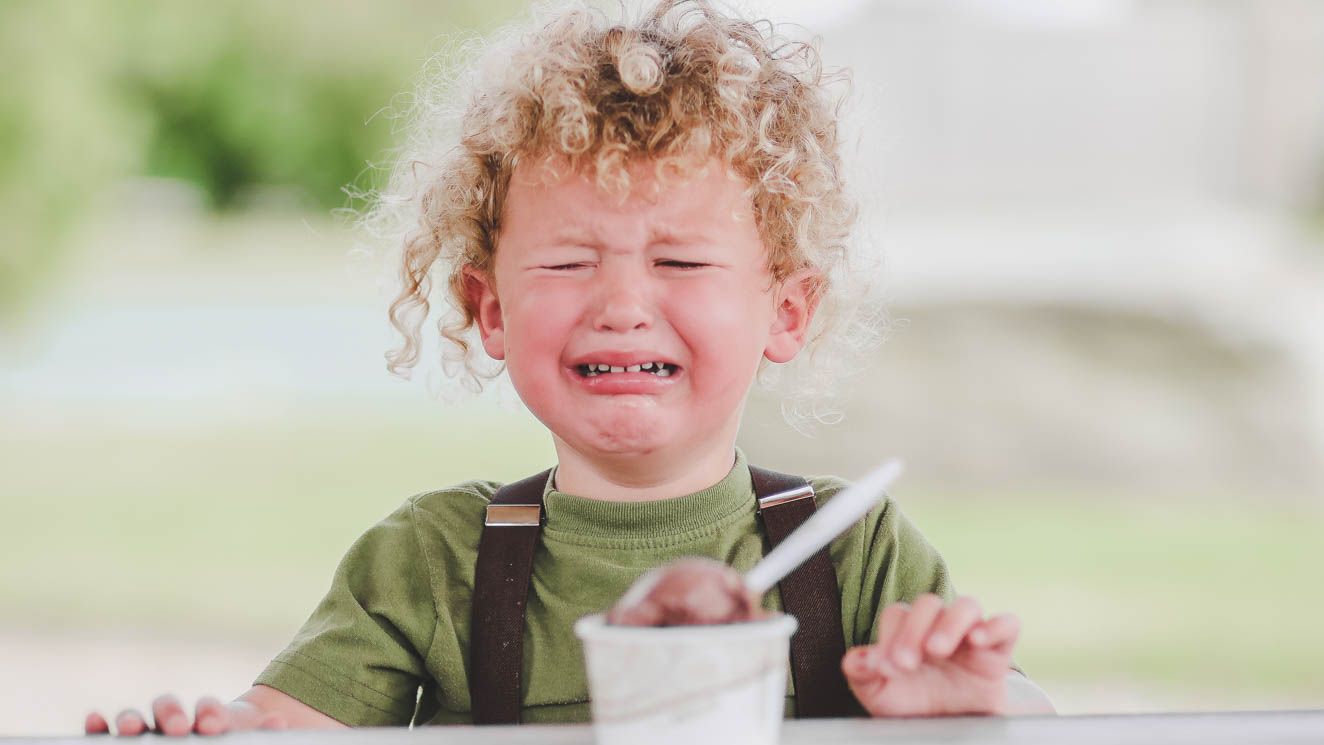

Hmmm… what happens when I pull this cord here?/ I think I’ll just climb up on this thing-y for a quick sec…/Oh that staircase looks fun! Your little one is mobile, crawling everywhere (eeks!) and pulling up to standing using chair legs and table legs and human legs, and it won’t be too long before she’s trying those first tentative steps. Now that she can scoot about, baby’s whole world has opened up and and she wants to have a hand at all the things. Who can blame her?
So, naturally, you might be wondering when you should start disciplining baby. When are you supposed to teach baby right from wrong? What should you be saying or doing when your sweet little angel starts wiggling out the dog door or yanks the crap out of her older sister’s hair?
According to Dr. Jane Rosen, PsyD, Director of the IKAR Early Childhood Center and a psychologist in private practice in Los Angeles, young babies are not yet actually developmentally capable of real learning. That is, the part of their brain that reflects on their own actions doesn’t come online during the first year of life.
“It’s too high a function for him or her to pair I shouldn’t do this because I’ll harm my body or I shouldn’t do this because mom doesn’t want me to,” she said. “A sense of what’s OK and what’s not OK is not part of the mix in the first year. They’re just not pairing the light socket with danger.”
Rosen said it’s natural for parents to think their 1-year-olds or 2-year-olds know more than they do. “We tend to endow them with a much more mature brain that can reflect and say ‘oh, mommy doesn’t want me to do this, I’m going to do it anyway.’” In reality, she said, this happens closer to age three.
So, for right now, it can be helpful for parents to keep in mind…
- There’s no intent. You might be certain that your baby is doing something with a mischievous gleam in her eye, but that’s just not the case. Babies do not manipulate or disobey or scheme. Really.
- You cannot spoil a baby this age. Marinate on this one for a minute, because it comes as a surprise (and, in some cases, a relief) to many parents. “The [parents’] goal of the first year is to say ‘the world is a safe place for you and I will take care of you when it’s not,’” Rosen said. “Babies need to learn that the world is a trustworthy place where they can get their needs met. We’re setting the foundation for mental health.”
- Consequences are not a thing (yet). Rosen is a proponent of consequences, but emphasizes that this teaching tool really can’t be understood until age 4 or 5. (And then around 5, kids become very rule-bound!)
Now, you might be thinking, my kid does so learn! We did sleep learning and she picked it up after three nights! And to that, Rosen would say that learning repetition is a lower function, and, yes, even the youngest babies can do that. After all, humans are pattern-seekers.
What can and should parents do now?
- Use ‘no’ – in small doses. As your baby goes toward danger, by all means use the word no, just be sure to use it judiciously. Your baby will definitely react, though it may be more to the startling tone of your voice than the word.
- Show them what they can do. Instead of constantly telling them what they can’t do, redirect. Give them a toy that’s safe or something they can kick or a new surface to bang on.
- Babyproof. You’ve already done this, we know. And part of the reason you do it is to make a safe world for them so you don’t always have to be saying no and stopping them in their explorations.
So, read up all you want on early childhood development and behavior – it’s pretty fascinating stuff. Just know that this first year, your job is to enjoy your baby, love her, keep her safe when she’s on the move… and really save “no” for when it’s a Big No.







